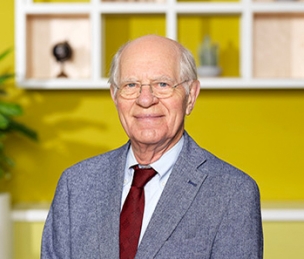Displaying 1 - 13 of 13
-
Baayen, H., Levelt, W. J. M., Schreuder, R., & Ernestus, M. (2007). Paradigmatic structure in speech production. Proceedings from the Annual Meeting of the Chicago Linguistic Society, 43(1), 1-29.
Abstract
The main goal of the present study is to trace the consequences of local and global markedness for the processing of singular and plural nouns. Decompositional models such as proposed by (Pinker (1997); Pinker (1999)) and (Levelt et al. (1999)) predict a lexeme frequency effect and no effects of the frequencies of the singular and the plural forms. Experiments 1 and 4 reveal the expected lexeme frequency effect. Furthermore, in these experiments there are no clear independent effects of the frequencies of the inflected forms. However, the effects of Entropy and Relative Entropy that emerge from these experiments show that in production knowledge of the probabilities of the individual inflected forms do play a role, albeit indirectly. These entropy effects bear witness to the importance of paradigmatic organization of inflected forms in the mental lexicon, both at the level of individual lexemes (Entropy) and at the general level of the class of nouns (Relative Entropy). -
Korvorst, M., Roelofs, A., & Levelt, W. J. M. (2007). Telling time from analog and digital clocks: A multiple-route account. Experimental Psychology, 54(3), 187-191. doi:10.1027/1618-3169.54.3.187.
Abstract
Does the naming of clocks always require conceptual preparation? To examine this question, speakers were presented with analog and digital clocks that had to be named in Dutch using either a relative (e.g., “quarter to four”) or an absolute (e.g., “three forty-five”) clock time expression format. Naming latencies showed evidence of conceptual preparation when speakers produced relative time expressions to analog and digital clocks, but not when they used absolute time expressions. These findings indicate that conceptual mediation is not always mandatory for telling time, but instead depends on clock time expression format, supporting a multiple-route account of Dutch clock time naming. -
Levelt, W. J. M. (2007). Levensbericht Detlev W. Ploog. In Levensberichten en herdenkingen 2007 (pp. 60-63). Amsterdam: Koninklijke Nederlandse Akademie van Wetenschappen.
-
Özdemir, R., Roelofs, A., & Levelt, W. J. M. (2007). Perceptual uniqueness point effects in monitoring internal speech. Cognition, 105(2), 457-465. doi:10.1016/j.cognition.2006.10.006.
Abstract
Disagreement exists about how speakers monitor their internal speech. Production-based accounts assume that self-monitoring mechanisms exist within the production system, whereas comprehension-based accounts assume that monitoring is achieved through the speech comprehension system. Comprehension-based accounts predict perception-specific effects, like the perceptual uniqueness-point effect, in the monitoring of internal speech. We ran an extensive experiment testing this prediction using internal phoneme monitoring and picture naming tasks. Our results show an effect of the perceptual uniqueness point of a word in internal phoneme monitoring in the absence of such an effect in picture naming. These results support comprehension-based accounts of the monitoring of internal speech. -
Roelofs, A., Özdemir, R., & Levelt, W. J. M. (2007). Influences of spoken word planning on speech recognition. Journal of Experimental Psychology: Learning, Memory, and Cognition, 33(5), 900-913. doi:10.1037/0278-7393.33.5.900.
Abstract
In 4 chronometric experiments, influences of spoken word planning on speech recognition were examined. Participants were shown pictures while hearing a tone or a spoken word presented shortly after picture onset. When a spoken word was presented, participants indicated whether it contained a prespecified phoneme. When the tone was presented, they indicated whether the picture name contained the phoneme (Experiment 1) or they named the picture (Experiment 2). Phoneme monitoring latencies for the spoken words were shorter when the picture name contained the prespecified phoneme compared with when it did not. Priming of phoneme monitoring was also obtained when the phoneme was part of spoken nonwords (Experiment 3). However, no priming of phoneme monitoring was obtained when the pictures required no response in the experiment, regardless of monitoring latency (Experiment 4). These results provide evidence that an internal phonological pathway runs from spoken word planning to speech recognition and that active phonological encoding is a precondition for engaging the pathway. (PsycINFO Database Record (c) 2007 APA, all rights reserved) -
Levelt, W. J. M. (1966). Generatieve grammatica en psycholinguïstiek I: Inleiding in de generatieve grammatica. Nederlands Tijdschrift voor de Psychologie en haar Grensgebieden, 21, 317-337.
-
Levelt, W. J. M. (1966). Generatieve grammatica en psycholinguïstiek II. Psycholinguïstisch onderzoek. Nederlands Tijdschrift voor de Psychologie en haar Grensgebieden, 21, 367-400.
-
Levelt, W. J. M., & Plomp, R. (1966). Les dimensions dans la perception des intervalles musicaux. Sciences de l'art, 3, 172-182.
-
Levelt, W. J. M. (1966). The alternation process in binocular rivalry. British Journal of Psychology, 57(3/4), 225-238.
-
Levelt, W. J. M. (1966). Some demonstrations of the complementary functioning of the eyes. Perception & Psychophysics, 1, 39-40.
-
Levelt, W. J. M. (1966). The perceptual conflict in binocular rivalry. In M. A. Bouman (
Ed. ), Studies in perception: Dedicated to M.A. Bouman (pp. 47-60). Soesterberg: Institute for Perception RVO-TNO. -
Levelt, W. J. M., Van de Geer, J. P., & Plomp, R. (1966). Triadic comparisons of musical intervals. British Journal of Mathematical & Statistical Psychology, 19(2), 163-179.
-
Plomp, R., & Levelt, W. J. M. (1966). Perception of tonal consonance. In M. A. Bouman (
Ed. ), Studies in Perception - dedicated to M.A. Bouman (pp. 105-118). Soesterberg: Institute for Perception RVO-TNO.

Share this page